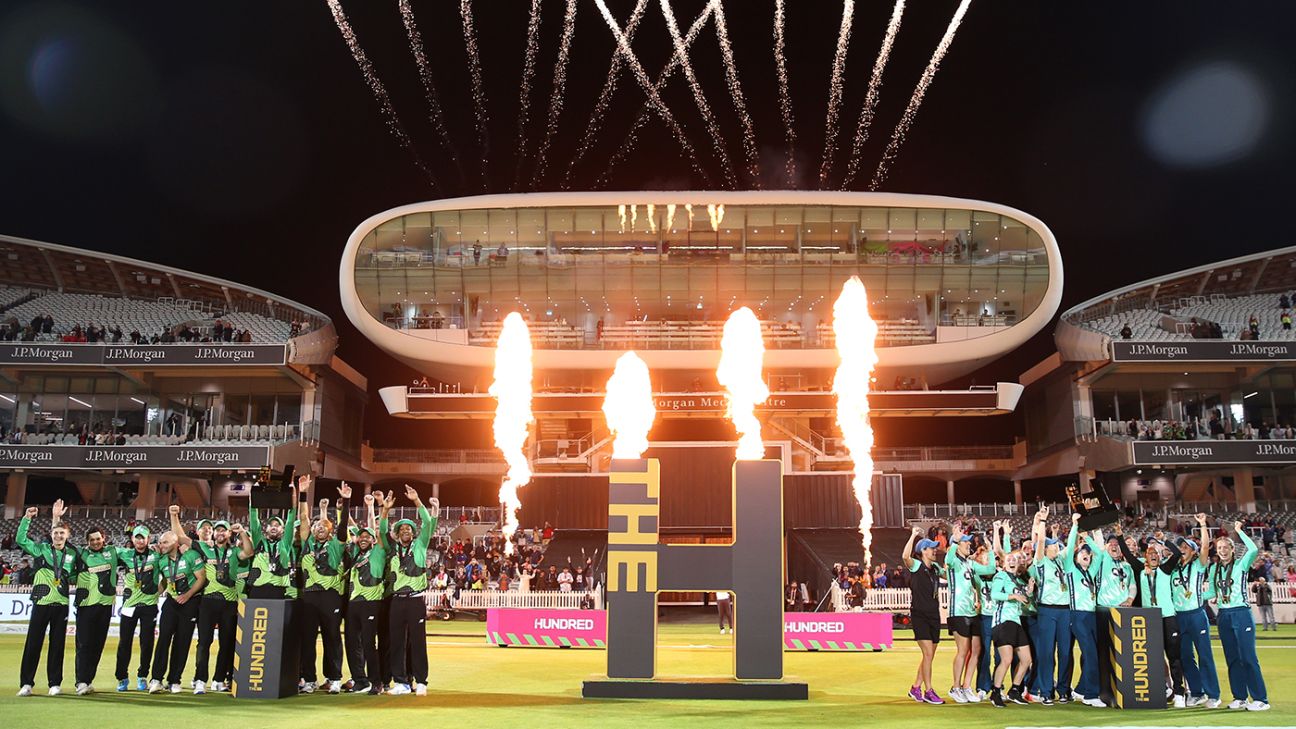Board claims 16.1 million people watched new tournament on TV, with 510,000 tickets issued
The ECB has hailed audience figures for the first edition of the Hundred as “incredible” and promised it will lead to pay rises for women cricketers.
Sanjay Patel, the managing director of the tournament, claimed 16.1 million people watched the tournament on TV – a figure he said was more than the men’s World Cup in 2019 – with 510,000 tickets “sold or issued”.
Although the tournament was billed as offering equal prize-money for men and women, actual payment was far from equitable. While the lowest-paid male cricketer (involved in the entire event) was paid £25,000, the highest-paid women cricketer was paid £24,000. The lowest pay bracket for women players was £3,600. But with Patel also claiming the tournament was on target to provide a “£10m surplus into the game”, the ECB is now committed to narrowing that gap.
“There’s going to be some good news for women’s salaries,” Tom Harrison, the ECB chief executive, said. “You can expect that.”
Among other figures published by the ECB were claims that 55% of ticket buyers for the Hundred had not bought tickets for cricket in England or Wales previously; that, of those watching on Sky or the BBC, 57% hadn’t watched any other live ECB cricket in 2021; and that 19% of all tickets sold were for children. As a result, it allowed Harrison to claim the competition was “delivering” in “throwing cricket’s doors open” to a new audience.
“We’ve seen in year one how it’s already delivering,” Harrison said. “It’s provided outstanding entertainment for new and existing fans alike, unearthed new cricketing heroes, and it’s been fantastic to see so many children and families enjoying the action. It’s also changed the game for women’s cricket, smashing record after record and creating role models for girls and boys to be inspired by.
“We need to grow cricket, reach more people and inspire more children to pick up a bat and ball and that’s exactly what the Hundred does.”
Despite hailing the viewing figures, Harrison did admit that there had been “huge amounts of learnings” from the first edition. For one thing, he conceded there had been “little pockets of anti-social behaviour” (which he partially ascribed to “Covid-related issues”) while he also accepted there was “a concern” about collateral damage to other formats of the game.
“We obviously understand the complexity and difficulty of having no red-ball cricket when you’re playing a premium Test series,” Harrison said. “That’s an issue and we need to try and find ways of resolving it. We have to get to a place where we provide opportunities for players to get into good form and continue to play red-ball cricket during a Test series. It’s not an easy thing to solve, but we’re working hard on that at that moment.
“The whole point of growing the base of the sport is so that you protect the things that are most precious to us. And that is Test cricket for us.”
The ECB also confirmed that double-headers would continue for the foreseeable future. While the original plan was to host men’s and women’s games at different ground, the demands of Covid forced a rethink. It subsequently resulted in large crowds at women’s games
“The double-header model wasn’t the original proposition,” Harrison said. “We were forced to do that through Covid. But actually it’s turned out to be one of the best things that’s happened. It was an enforced change which has turned into a huge benefit.”
Patel agreed. “The men’s and women’s games just have to go together,” he said. “For the next three or four years at least I think they have to be together.”
George Dobell is a senior correspondent at ESPNcricinfo
